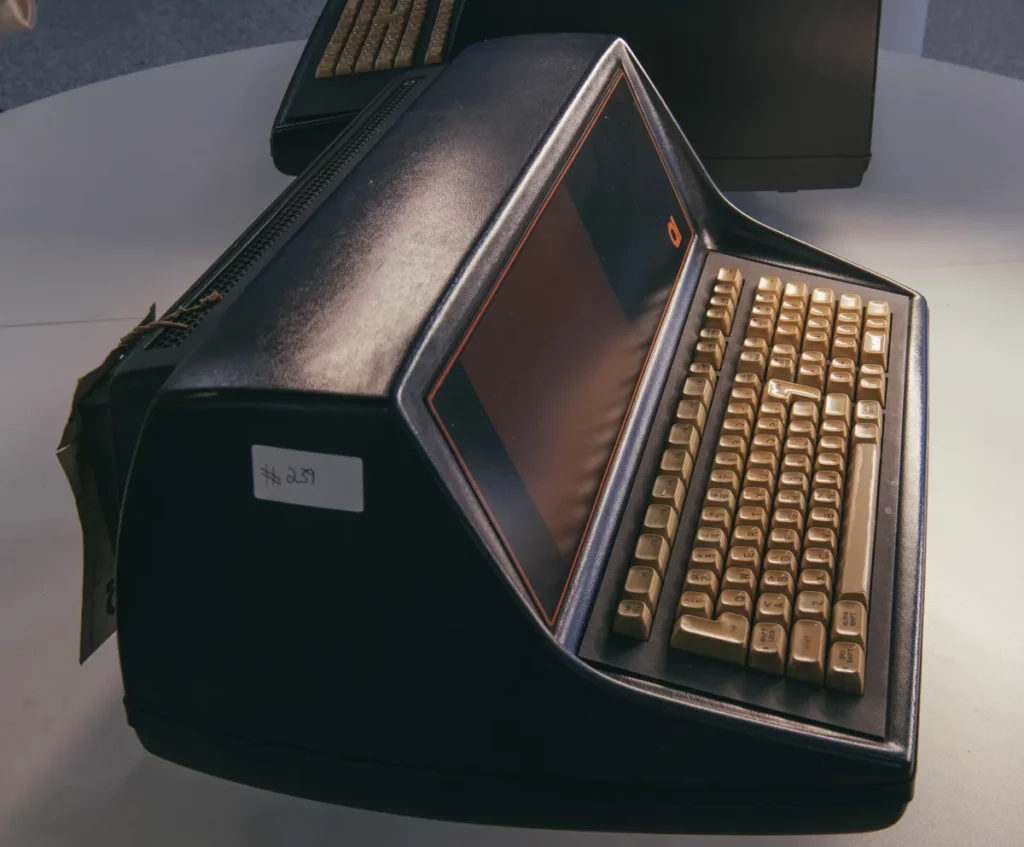In a remarkable twist of fate, two of the three last-known surviving Q1 microcomputers considered the pioneers of the modern desktop computer, have resurfaced during a routine house clearance in the United Kingdom. This serendipitous discovery marks a significant moment in computing history, shedding light on a crucial artifact nearly half a century after its last sighting.
The uncovering of the two Q1 microcomputers occurred as employees from the house-clearing company Clear diligently sorted belongings in a property in the UK. Buried under layers of boxes, the devices were stumbled upon on December 18, adding a new chapter to their storied journey. Brendan O’Shea, the founder of Just Clear, recounted the surprising find, highlighting how the significance of the devices eluded them until further investigation.
Upon consulting with an expert, it became apparent that these devices held a monumental place in the annals of computing history. The Q1 microcomputers, manufactured by the American Q1 Corporation in 1972, represented a groundbreaking technological advancement. These devices were not mere relics of the past; they were the world’s first fully integrated desktop computers powered by a single-chip microprocessor, a fact that astounded O’Shea and his team.

Professor Paul Neve of Kingston University underscored the pivotal role of these early pioneers in shaping the technological landscape we inhabit today. He emphasized that without the contributions of entities like the Q1 Corporation, the computing trajectory as we know it would have been vastly different.
ALSO READ: Lenovo introduces the World’s First laptop with a transparent microLED display
The significance of the Q1 microcomputers was further underscored by their inclusion in an exhibition at Kingston University titled “Creating the Everything Device: Showcasing the Machines that Built the Future.” These artifacts stood as testaments to the relentless march of technological progress alongside other seminal devices like the ZX Spectrum and the BBC Micro.
Before the dawn of the iconic IBM and Apple computers that would shape the digital era, a silent pioneer existed: the Q1 microcomputer. Emerging five years before the debut of the Apple 1 and even preceding IBM’s touted Model 5100, the Q1 made waves in the world of technology.

In 1977, IBM introduced the Model 5100, lauded as one of the earliest ‘portable computers.’ In a now-amusing full-page advertisement, IBM proudly proclaimed its 50-pound (23-kilogram) Model 5100 lightweight enough for easy transport. However, little did they know that the Q1 had already carved its place in history, having been released years prior.
Similarly, it wasn’t until later that Steve Jobs and Steve Wozniak would unveil the Apple 1. Yet, the Q1 had already set the stage for single-chip microprocessor-based computing long before the Apple duo’s breakthrough.
ALSO READ: Brain-Computer Interface Lets Paralyzed Individuals Control Devices
Despite its groundbreaking nature, the Q1 faced challenges upon release, primarily due to its exorbitant price tag. Priced at $20,500 (£16,295) in 1979, which equates to a staggering $90,000 (£71,542) in today’s currency, the Q1 was largely targeted towards business and professional environments.

According to a 1979 edition of the Association of Computer Users ‘Benchmark Report,’ this hefty price placed the Q1 in a league of its own, far beyond the reach of average consumers. In comparison, the IBM 5100 ranged from £7,217 ($8,975) to £16,000 ($19,975), while the Apple 1 cost less than $700 (£556).
However, amidst its premium price, the Q1 garnered praise for its user-friendly interface, being hailed as ‘approachable and easy to operate for the novice’ by reviewers of the time.
ALSO READ: The World’s First AI Child Unveiled by Chinese Scientists | AI-Child-Tong-Tong
Professor Neve encapsulates the significance of this early era, highlighting how the groundwork laid by pioneers like the Q1 Corporation paved the way for the ubiquitous modern computer we know today.

As these historical artifacts take center stage in an ongoing exhibition showcasing 60 different computers and gaming machines, including Atari, BBC Micro, Acorn Electron, Amstrad, Commodore, and the Dragon 32, their future remains uncertain. Whether they find new homes through auction or private sale following the exhibition, the legacy of the Q1 microcomputers continues to captivate and inspire generations to come.
Reflecting on the unexpected turn of events, Brendan O’Shea expressed his astonishment at the find, emphasizing the importance of preserving such historical artifacts for future generations. The journey of these two Q1 microcomputers from obscurity to prominence serves as a reminder of the enduring legacy of innovation and its profound impact on shaping our world.
ALSO READ: Differentiating Computer Vision and Artificial Intelligence: What Sets Them Apart?
As discussions turn toward the fate of these rare artifacts, speculation arises about the possibility of them being auctioned off or finding a permanent home in a museum or private collection. Regardless of their eventual destination, their rediscovery serves as a poignant reminder of the humble beginnings that paved the way for today’s digital age.









